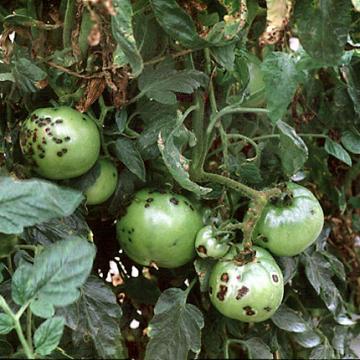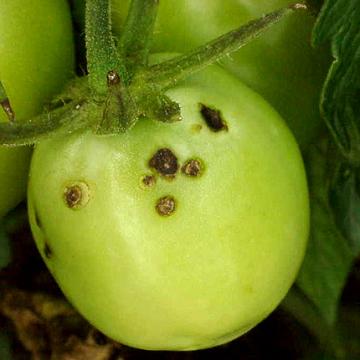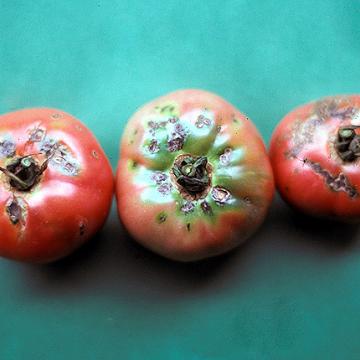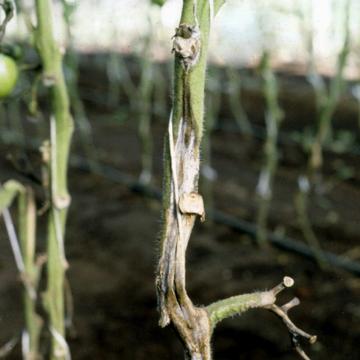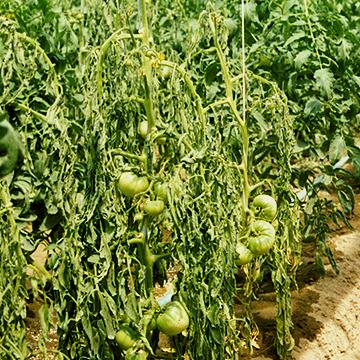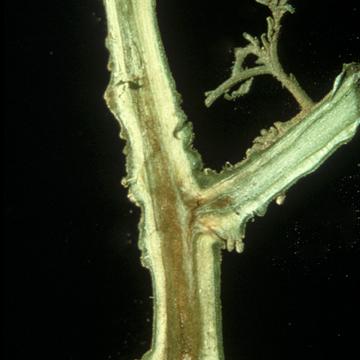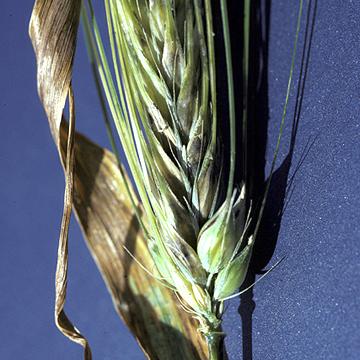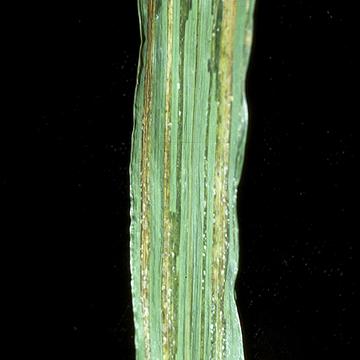DISEASE: Bacterial spot
HOST: Tomato
Severely infected fruit and leaves. The bacterial spot xanthomonads are Xanthomonas euvesicatoria, X. vesicatoria, X. perforans, and X. gardneri. X. perforans is not known to infect fruit.
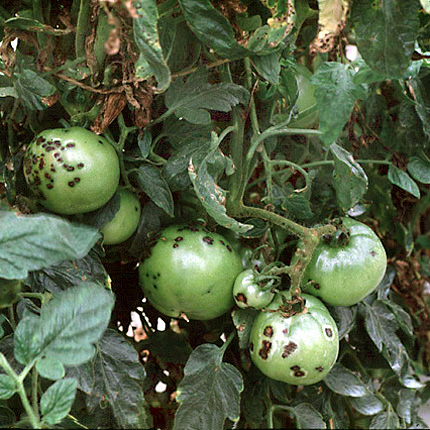
Bacterial spot | Tomato
DISEASE: Bacterial spot
HOST: Tomato (Lycopersicon esculentum)
PATHOGEN: Xanthomonas bacterial spot pathogens
PATHOGEN SYNONYM: Xanthomonas axonopodis pv. vesicatoria
SOURCE: J. Jones
DISEASE: Bacterial spot
HOST: Tomato
Green fruit with dark brown lesions. The bacterial spot xanthomonads are Xanthomonas euvesicatoria, X. vesicatoria, X. perforans, and X. gardneri. X. perforans is not known to infect fruit.
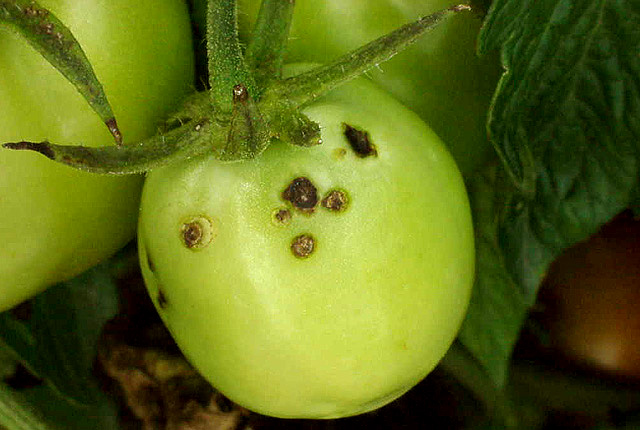
Bacterial spot | Tomato
DISEASE: Bacterial spot
HOST: Tomato (Lycopersicon esculentum)
PATHOGEN: Xanthomonas bacterial spot pathogens
PATHOGEN SYNONYM: Xanthomonas axonopodis pv. vesicatoria
SOURCE: S. Miller
DISEASE: Bacterial spot
HOST: Tomato
Ripe fruit with dark brown spots. The bacterial spot xanthomonads are Xanthomonas euvesicatoria, X. vesicatoria, X. perforans, and X. gardneri. X. perforans is not known to infect fruit.
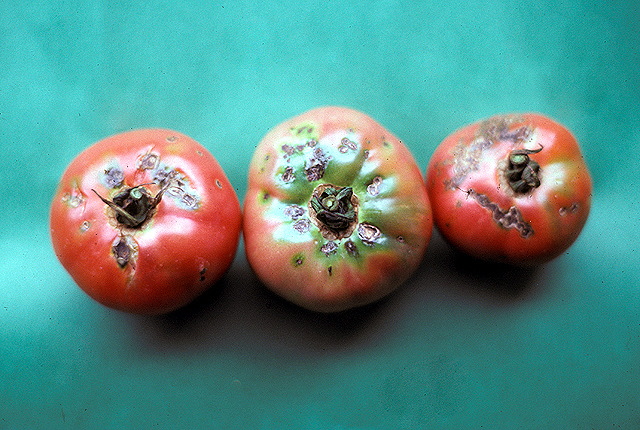
Bacterial spot | Tomato
DISEASE: Bacterial spot
HOST: Tomato (Lycopersicon esculentum)
PATHOGEN: Xanthomonas bacterial spot pathogens
PATHOGEN SYNONYM: Xanthomonas axonopodis pv. vesicatoria
SOURCE: M. Goto
DISEASE: Bacterial stem rot
HOST: Tomato
Stem with long necrotic lesions. The pathogen often enters plants following pruning injuries.
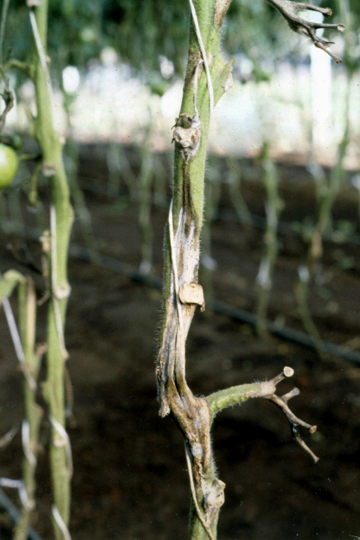
Bacterial stem rot | Tomato
DISEASE: Bacterial stem rot
HOST: Tomato (Lycopersicon esculentum)
PATHOGEN: Pectobacterium atrosepticum
PATHOGEN SYNONYM: Ewinia carotovora subsp. atroseptica
SOURCE: A. Alvarez
DISEASE: Bacterial stem rot
HOST: Tomato
Wilt is first symptom of disease. Later, the pith usually disintegrates, causing hollow and blackened stems.
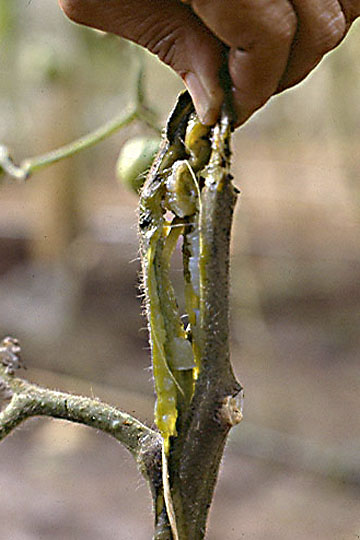
Bacterial stem rot | Tomato
DISEASE: Bacterial stem rot
HOST: Tomato (Lycopersicon esculentum)
PATHOGEN: Pectobacterium atrosepticum
PATHOGEN SYNONYM: Erwinia carotovora subsp. atroseptica
SOURCE: M. Stanghelllini
DISEASE: Bacterial wilt
HOST: Tomato
Severely infected plants in glass house. First symptoms appear as wilt of young leaves. Leaf epinasty may occur.
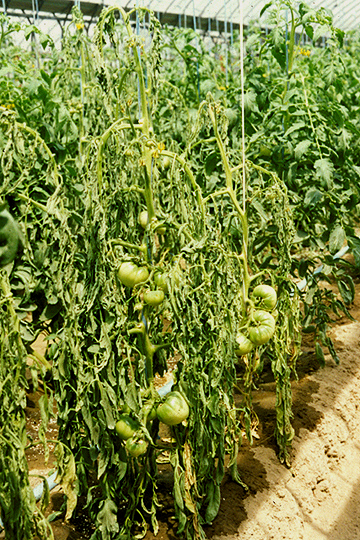
Bacterial wilt | Tomato
DISEASE: Bacterial wilt
HOST: Tomato (Lycopersicon esculentum)
PATHOGEN: Ralstonia solanacearum
PATHOGEN SYNONYM: Pseudomonas solanacearum
SOURCE: M. Goto
DISEASE: Bacterial wilt
HOST: Tomato
Necrotic, brownish, cortical tissues. Massive infection of cortex may result in water-soaked lesions on stem surfaces.
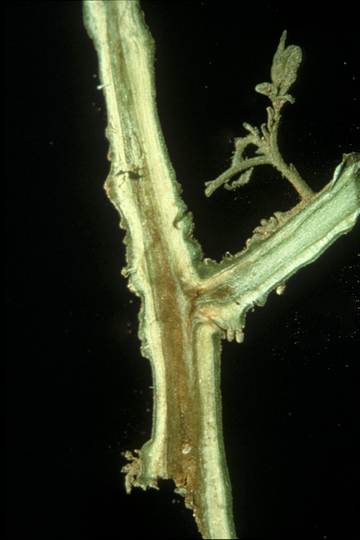
Bacterial wilt | Tomato
DISEASE: Bacterial wilt
HOST: Tomato (Lycopersicon esculentum)
PATHOGEN: Ralstonia solanacearum
PATHOGEN SYNONYM: Pseudomonas solanacearum
SOURCE: A. Hayward
DISEASE: Black chaff (Bacterial leaf streak)
HOST: Barley
Black chaff is characterized by water-soaked and darkened glumes on barley heads and streaks and stripes on leaves.
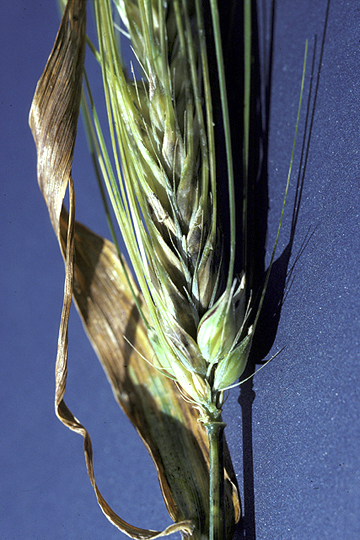
Black chaff (Bacterial leaf streak) | Barley
DISEASE: Black chaff (Bacterial leaf streak)
HOST: Barley (Hordeum vulgare)
PATHOGEN: Xanthomonas translucens pv. undulosa
SOURCE: S. Thomson
DISEASE: Black chaff (Bacterial leaf streak)
HOST: Barley
Leaf with linear, water-soaked lesions that turn necrotic and brown. Flakes of dry bacterial exudate are apparent on the lesions. The pathogen also causes black glume of barley.
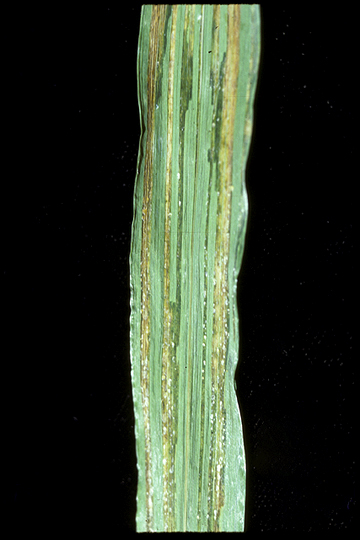
Black chaff (Bacterial leaf streak) | Barley
DISEASE: Black chaff (Bacterial leaf streak)
HOST: Barley (Hordeum vulgare)
PATHOGEN: Xanthomonas translucens pv. undulosa
SOURCE: S. Thomson


